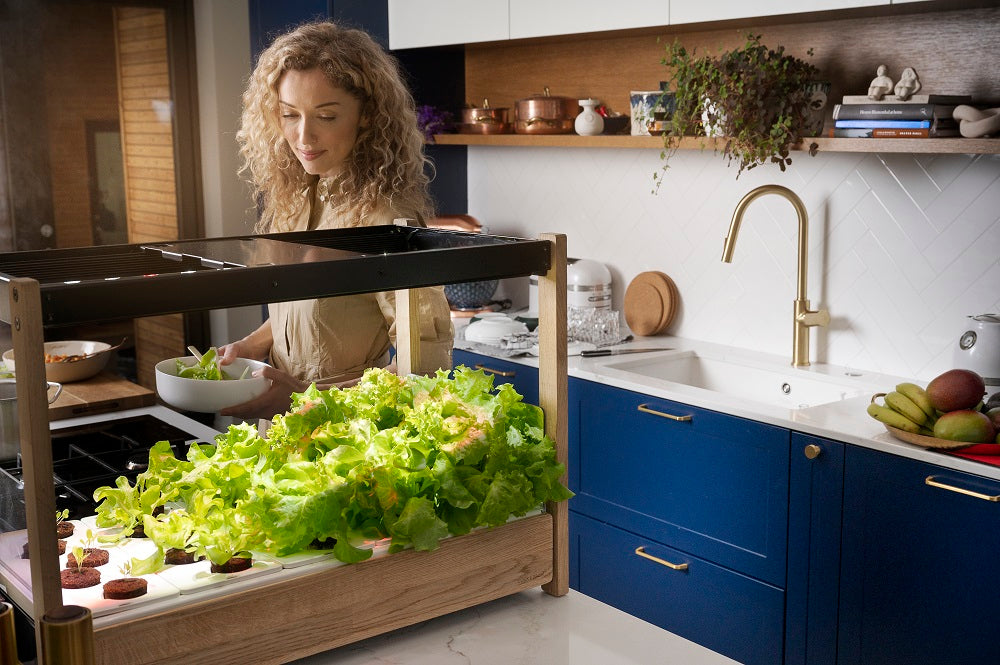News
5 Simple Ways to Become a More Sustainable You

Sustainable living means everything to us here at Click & Grow. It’s the driving force behind every smart garden and plant pod we produce. If you want to live sustainably, but can't seem to find the motivation or inspiration to get started, here are some simple ideas you can try today.
1. Eat less meat
Reducing your consumption of meat products is one of the most impactful and easiest ways to reduce your foodprint. It’s astonishing to think that, if cows were a country, they’d be the 3rd highest emitters of greenhouse gases among all others. It's not just about cows and methane, either. While animal farming takes up 83% of the planet’s agricultural land, it only provides 18% of our calories. The agricultural industry is one of our biggest sources of greenhouse gases and it's also a huge consumer of water, fossil fuels, and fertilizer.
This doesn't mean you have to give up meat altogether. Going from eating red meat two or three times a week to once every few weeks can make a big difference. Similarly, switching from chicken to fish once or twice a week can cut down on your carbon footprint and reduce strain on the environment.
You can also try going meatless for a day or two each week and see how you feel. If you’re comfortable with that, gradually increase the number of days you go without meat each week.
2. Carry a reusable water bottle

In total, humans use approximately 1.2 billion plastic bottles per minute. That’s a lot of plastic waste. We’re not so good at recycling, either: less than 10% of plastic actually gets recycled. Much of it ends up in landfills or being incinerated.
Furthermore, it's estimated that by 2050, there’ll be more plastic than fish in the ocean. A large amount of waste comes from plastic water bottles, which millions of people use every day. You can be more eco friendly by using a reusable bottle instead of single use plastic ones. These bottles come in all shapes and sizes, so you can pick one based on your style and needs. Make sure you stick to the bottle you opt for, though! Producing one reusable metal or plastic bottle requires hundreds of times more resources than a thin walled, regular plastic bottle.
3. Carpool or use public transportation

Transportation makes up a huge share of most people's carbon footprints — about 29% in the U.S alone, and considerably more in countries where public transit is less common. While cutting back on driving may be the best way to reduce your transportation footprint, that's not always possible. If you need to drive or fly, here are some ways to do it more sustainably:
Carpool. If you need to drive long distances, consider carpooling with friends or coworkers who are making similar trips. You could even take turns driving when you can't get a ride from someone else.
Use public transit. Where it's available, public transit is often a better option than driving alone because it can accommodate many passengers at once, dramatically reducing your trip's carbon footprint for each person.
Take trains or buses for long trips instead of flying. Air travel has one of the highest carbon footprints of any mode of transportation, so taking alternate routes is usually better for the environment than flying if you have time to spare.
Rent an electric car or use a car-sharing service when you can. Electric vehicles have lower carbon footprints than gas cars, and car-sharing services allow multiple people to use the same vehicle for short-term
4. Take shorter showers

How much time do you spend in the shower? If you answered "too much," then you're not alone. The average American shower lasts around 7.8 minutes, and uses approximately 59.8 liters of water.
How can you reduce your environmental footprint while taking a shower? One solution is to cut back on the amount of time you spend in the shower. You'd be surprised how little time it takes to get clean. Three to five minutes is normally all it takes. Try using a timer or turning off the water while you lather up. If longer showers are a must-have in your life, getting used to slightly colder water has a similarly big impact.
5. Grow more of your own food
Growing at least some of your own food is a great way to reduce food waste and preserve nutrients. When you grow at the place of consumption, there are no food miles, no heating or cooling required, no pesticides or other harmful plant protection chemicals used, and there’s no loss of nutritional value as you can harvest just before consumption.
We believe that indoor gardening is one of the keys to food sustainability and security. 150 years ago, many people grew food at home. In fact, during WWI and WWII, cities around the world planted victory gardens to tackle food deficiency. Thanks to modern indoor gardening technology that requires no previous experience, anyone can grow vitamin-rich food at home. Click & Grow smart gardens are designed to do just that.
Live and eat more sustainably today
Explore more:

